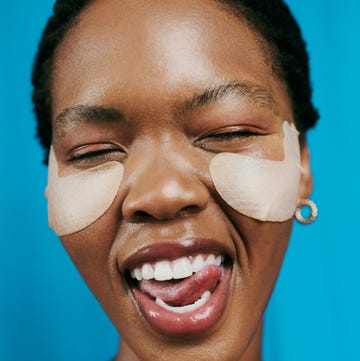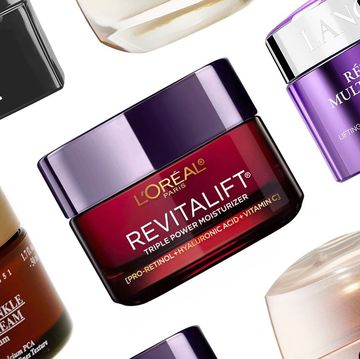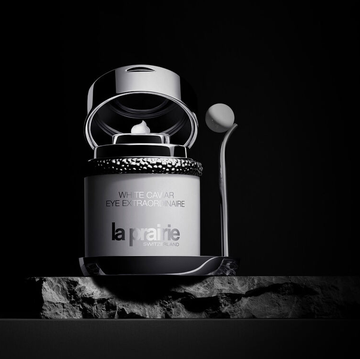Nestled in celebrity facialist Georgia Louise's modernist atelier on Manhattan's Central Park West is an arsenal of products to create smooth, flawless-looking skin. Her most desired tool, however, is the Deesse Spectrum Mask, a $2,900 Korean-designed LED contraption resembling Jason Voorhees's white hockey mask from Friday the 13th. Louise claims that the mask, which she uses regularly as part of her customized facials ($550 a pop), not only prevents aging, erases fine lines, an improves skin tone but also is "life-changing," she says. "Linda Evangelista was the first client to buy it, then makeup artist Gucci Westman got one, and it just snowballed."
How LED Light Therapy Works So why is the Deesse mask which Louise discovered at a beauty trade show, creating such a buzz? At-home LED (light-emitting diode) treatments are nothing new: They usually involve a handheld device that sends specific wavelengths of light energy (painlessly) into the skin's deeper layers. Red light stimulates collagen and elastin production, which leads to plumped wrinkles and firmer skin; blue light kills the bacteria that contributes to acne. The Deesse has both red and blue lights, and they can be turned on simultaneously. In addition, a third, near-infrared light promotes circulation and scar healing.
A big part of the Deesse's allure is that it's unusual to have red and blue lights in one device, just as it is to be able to combine them. It's also rare to find a device that is contoured to fit over the entire face. Louise says that the mask should be purchased only through skin-care professionals. "You have to give instructions on how to use it—you don't want to overdose on light therapy. It's a professional-strength mask, and it's not something to be bought lightly and abused," she says. "But for anyone who wants to prolong healthy looking skin without invasive surgeries, it's a phenomenal tool." She recommends using the mask no more than three or four times a week in 20-minute increments, after applying Biologique Recherche's Lotion P50 and Creme Masque Vernix to the face. Louise considers a woman in her 40s to be the ideal candidate but says that people with severe acne can also benefit from the mask. "It's fabulous for inflammation and controlling the sebaceous glands," she explains.
The Deesse does have its skeptics. Dermatologist Neil Sadick, medical director of New York's Sadick Research Group, has been testing the device for the past six months and questions its individual effectiveness. However, he believes in the mask's potential usefulness when coupled with in-office treatments. "We might have a patient come in for an Omnilux in-office LED treatment once a month and then use the Deesse at home as a supporting device," he says. "The at-home technologies don't have the same energy levels, so they don't work as well. Plus, there are no good evidence-based studies showing its efficacy that have been published." And there may be risks associated with at-home LED devices: Studies have linked LED light with retinal damage (eye guards should always be worn when using the Deesse). Sadick has had patients "complain of flickering in their eyes" after LED therapy.
Westman, one of the fashion industry's most sought-after makeup artists, has no complaints. She's a devoted fan of the device, for use both on herself at home and on her celebrity and model clients at photo shoots. "I had been using handheld light machines for years, and it would take an hour and a half to do my whole face," she says. "Something started happening with my skin—rosacea, I think—and it was brutal; nothing was working. I used the Deesse one time, and the texture and quality of my skin changed. It's definitely tighter."
What's Next The distributor of Deesse, GTG Korea, is launching a souped-up version called the Opera, which offers more coverage through strips that capture the sides of the face, ears, and hairline, as well as an additional neck panel. Along with the LED lights, the Opera has a galvanic current feature, which purports to firm skin and increase product absorption. And there's a built-in nozzle that can be connected to an oxygen generator for oxygen facials. Until she can try this new mask, Westman keeps her Deesse tucked under her side of the bed. "I look like a freak when I lie next to my husband. I don't care though," she says, laughing.











